The first one has a 3mm thick, 4" long blade, tappered down to a sharp point.
The second is a folding knife with a 3" blade, tapered from 2 mm down to a sharp point.
The other has a1/2 tang blade, very thin and tapered down from 2 mm. The handles are Oak, which I have darkened and singed with a blow torch then rubbed with a stainless steel pot scrubber, that raised the grain really nicely, and when still warm I dipped the handles into a pot of molten beeswax. That got into all the nooks and crannies, between the blade and the handle, so there are no gaps for gunge and water to accumulate. Wiped off the excess wax with paper towels and gave them a good polish with a old shoe brush.
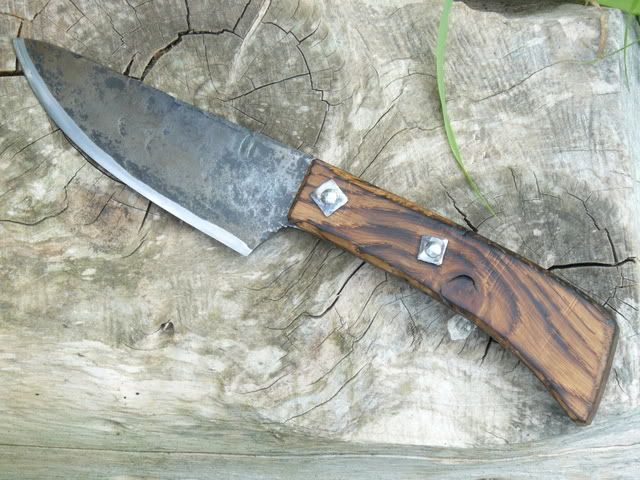
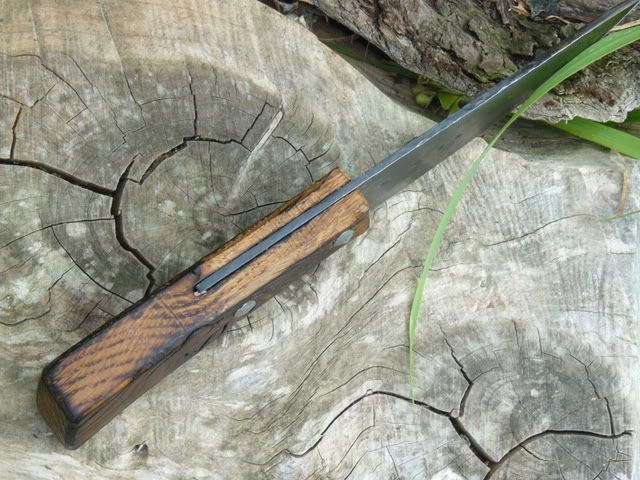
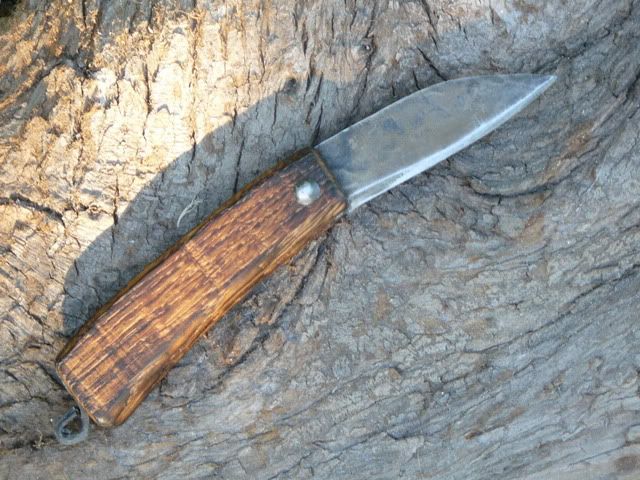
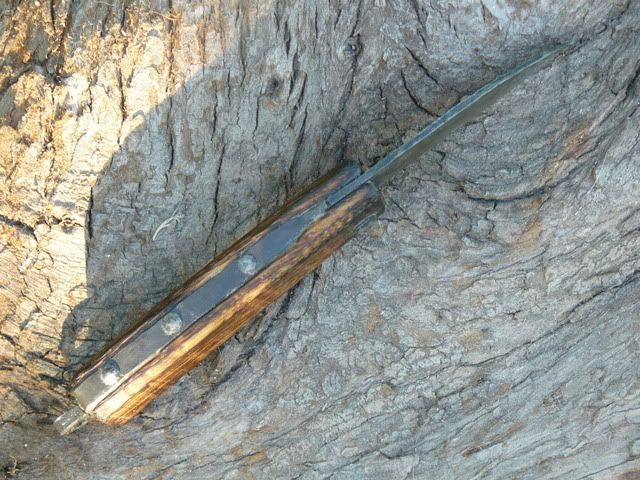
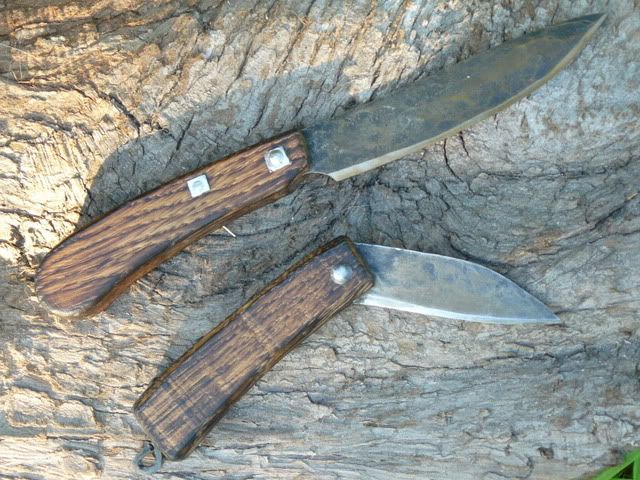
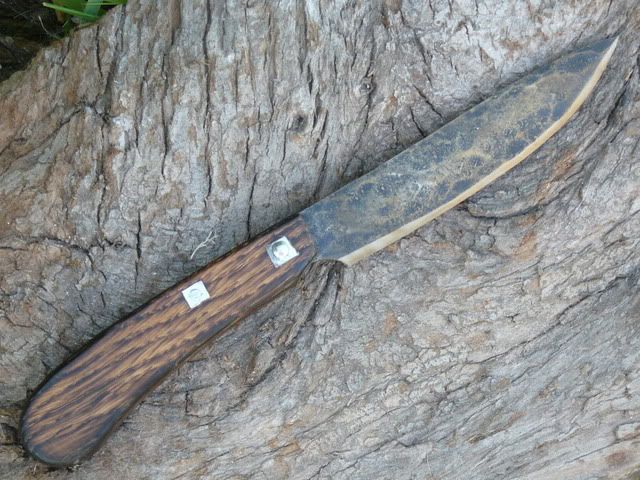
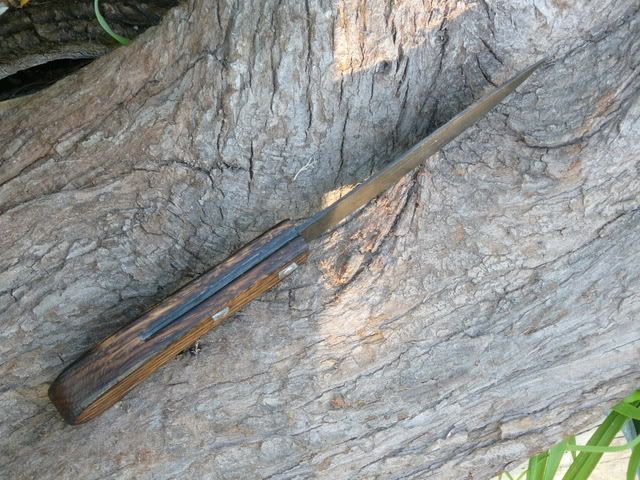
As far as folders are concerned, my aim is to produce lock back folders similar to the same design as this one. This is not one of my knives, I just borrowed the picture to illustrate what my goal is, minus the Damascus blade. There is a bit of work to do before I get there! I need to practice making springs for example.
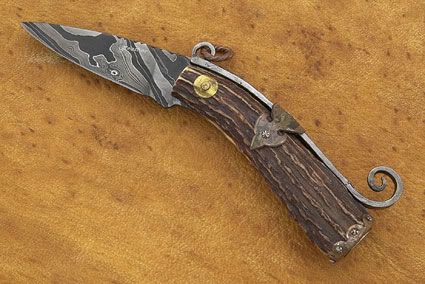
Really, I want to make knives that would not have looked out of place in the possible's pouch of a mountaiman. Not quite there yet, I need to do a bit more research to achieve my goal.
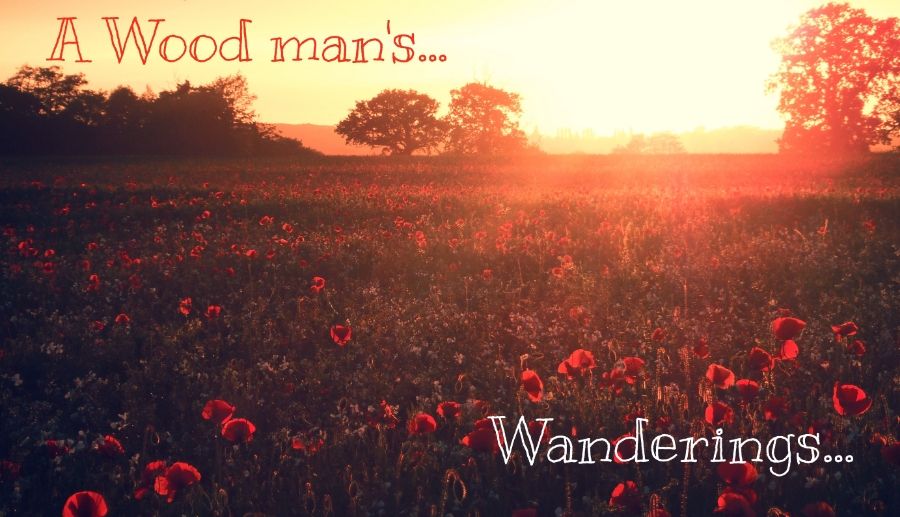
Nice work just the same Joel! I have an original very similar to that first knife, the image is at that link I sent you earlier, on my blog. But I fancy mine had a longer blade originally and has been reshaped from a broken blade. I like it though, it will make a good back-up knife for skinning and butchering.
ReplyDelete!8th century knives were pinned Joel, not riveted. I think that is the only difference with some of your knives.
If you are looking to sell them to living historians and reenactors, I suggest you make 18th century design and not 19th century. Earlier items lasted a long time, and fit into many periods. Later designs can not be used in an earlier period.
Regards, Le Loup.
nice knives,and a very good effort,something ive yet to do..
ReplyDeleteVery nice work joel.
ReplyDeleteThose knives look great.
Thank you so much for sharing it.that's amazing!!
ReplyDeleteExperience superior sharpness and edge retention, especially over time, as the CeramiChef blade will stay sharp ten times longer than a steel blade. The hardness of the blade means it will not bend, it will therefore cut exactly where you guide it - slicing in straight lines has never been easier.
Chef Knife
I do not know what to say regarding the ceramichef knife, but somehow it seems very WRONG! Sort of like using (close your eyes chaps and block your ears) a stainless steel blade!
ReplyDeleteYurk yurk patoo,shudder;-)